To help us provide you with free impartial advice, we may earn a commission if you buy through links on our site. Learn more
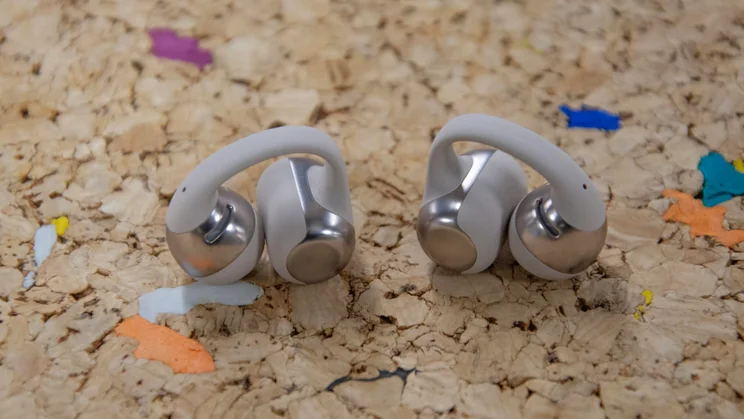
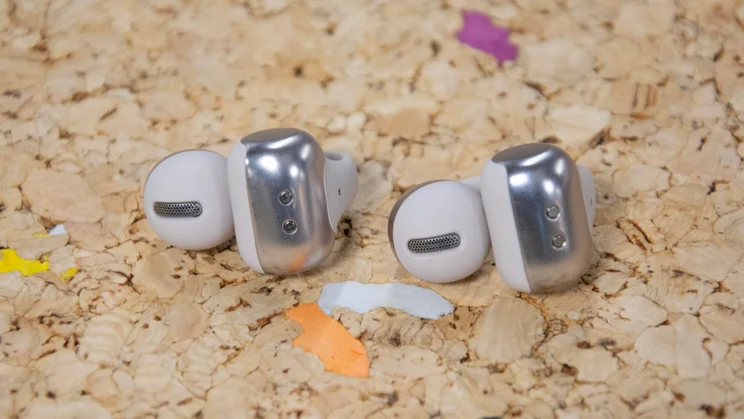


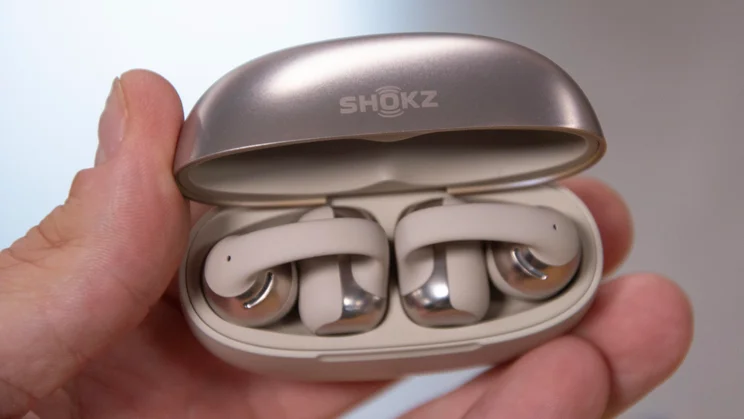

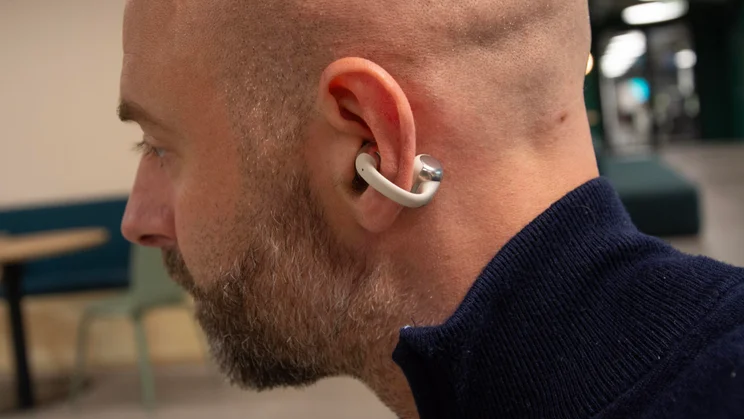


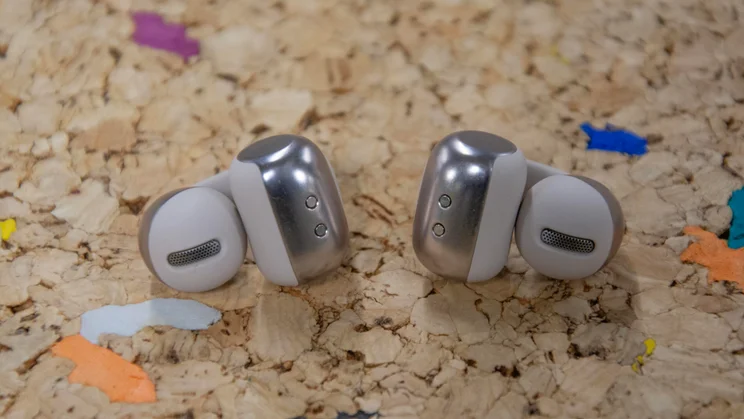
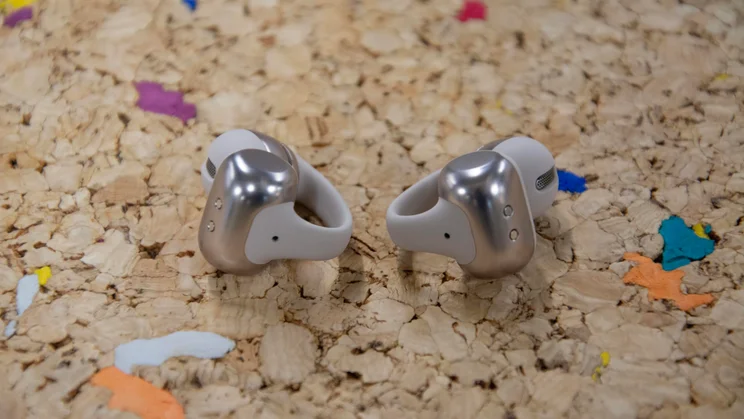

- Impressive audio quality
- Attractive design
- Strong battery life
- Hit and miss touch controls
- Basic EQ customisation
- Mic quality could be better
I didn’t expect air-conduction wireless earbuds like the Shokz OpenDots One to blow up in the way they have. When I reviewed my first pair – the Huawei FreeClip – I thought they’d be a fad. Two years on, the market is awash with open-ear headphones disguised as jewellery.
Bose is the most elite audio brand to have dipped its toe into “earbud couture” with its Ultra Open Earbuds, while well-established manufacturers Anker, JLab, and Edifier all have less stylish but cheaper models available.
Given Shokz’s reputation for making exceptional bone-conduction and air-conduction arphones like the OpenRun Pro and OpenFit 2 Plus, it’s surprising it took so long to adopt this form factor. But its first clip-on buds are worth the wait, delivering some of the best open-ear audio quality around in an eye-catching and reasonably well-priced package.
What do you get for the money?
I say reasonably well-priced, as despite being significantly cheaper than the Bose Ultra Open Earbuds (£249), the Shokz OpenDots One still aren’t cheap at £179. That’s the same price the Huawei FreeClip launched at, but those buds can now be picked up for £132, while the Anker Soundcore AeroClip cost £130, and the JBL Soundgear Clips, which were announced at Gamescom, will cost £120 when they arrive in mid-October.
Like all the clip-on earbuds I’ve reviewed, the OpenDots One have distinct battery and speaker components, with the former resting behind your ears and the latter positioned just in front of your ear canals. The two are linked by flexible arms made from a durable nickel-titanium material; Shokz calls these “JointArcs”.
Each of the speaker sections houses two 11.8mm transducers installed face-to-face with one another in a single, spherical sound module. Shokz calls this its “Bassphere” technology, and the arrangement apparently greatly improves bass response over other, more commonly used driver arrangements. The company also claims the setup’s output is equivalent to that produced by 16mm dynamic drivers.












The Shokz operate wirelessly over the latest version of Bluetooth (5.4), and support multipoint pairing, but Bluetooth codec compatibility is limited to SBC and AAC. Bose’s clip-on buds support aptX Adaptive, while the FreeClip support Huawei’s proprietary L2HC along with LC3. The lack of high-resolution support puts the Shokz behind on paper, but this isn’t a dealbreaker on open-ear earbuds, and they do support Dolby Audio, which aims to create “a more realistic and engrossing sound experience”.
That sound experience can be tweaked within the Shokz app, which provides a choice of four preset EQs – Standard, Vocal, Bass and Private – along with the option to create your own EQ. Other in-app options include toggles for turning wear detection and the noise-cancelling microphones on and off, plus the ability to customise the touch controls.
The app also displays a percentage figure for the charge level of the buds and their case, which both offer top-tier battery life. The buds should last you around ten hours on a single charge, with their pocketable pebble-shaped charging case taking total listening time to 40 hours. In comparison, the Huawei FreeClip clock in at eight hours in-ear and 36 hours total, while the Ultra Open Earbuds can only muster 7hrs 30mins in-ear and 27 hours in total.












What do they do well?
At 6.5g, the OpenDots One may be heavier than their Huawei (5.6g) and Anker (5.9g) counterparts, but they’re lighter than the buds from Bose (7g), and more attractive than all three. They’re bound to draw glances from passersby, but where some open-ear headphones prompt the question “What the hell are those?”, the OpenDots One are more likely to get an “Oooh, those look cool”.
They’re also extremely comfortable. Open-ear earbuds tend to be, but if the balance between the speaker and battery sections is off, they can apply pressure to areas of your ears they shouldn’t and become disagreeable during longer listening sessions. That wasn’t the case here; the JointArcs held the speakers in front of my ear canals in a stable and unintrusive manner throughout testing, which included several bounding runs in Richmond Park.












Best of all, the audio they delivered during my time with them was top-notch. The default Standard EQ nailed the vocals and mid-range musical elements of The Wanted’s Glad You Came, and the track was delivered with a level of energy I’ve not experienced on this style of earbuds before. The Bose Ultra Open Earbuds proved a little bit more revealing in terms of fine detail, but we’re talking surprisingly slender margins given the £70 price difference.
I was also very impressed with the buds’ bass output. Regular readers of my reviews know I’m a bass fiend, and low-end reproduction is typically a weakness of open-ear buds. However, Shokz’s Bassphere tech works very well. Lower frequencies had a pleasing kick to them on Ke$ha’s We R Who We R with the Standard EQ enabled, but were elevated to surprisingly satisfying levels by engaging the Bass EQ. Robust and well-rounded, yet not overinflated, the low-end performance of the OpenDots One was a big highlight.












The OpenDots One also have plenty of volume with which to overcome the main limitation of the open-ear format: external noise. The volume ceiling is high enough to listen to playlists or podcasts in just about any conditions, although maxing out volume for long periods isn’t recommended as it can damage your hearing long term. Still, it’s good to know that the OpenDots One can be cranked up for five minutes on a noisy Tube train to ensure you don’t miss a vital part of your audiobook.
Sound quality isn’t the only strength of the OpenDots One, though. An IP54 rating for dust and water resistance is among the best around for this class of earphones of buds and, as mentioned above, the battery life leaves rivals in the dust, too. The case also supports wireless charging, which helps reinforce the fact that this is a well-specified and premium product.
What could be improved?
My least favourite aspect of the OpenDots One is their touch control system. There are two ways in which you can interact with the buds: “single-finger taps” on the battery compartment or JointArc, and “two-finger pinches” on the top and bottom of the battery drum.
Double-taps with a single finger can be used to play or pause audio and answer or end calls, while triple-taps on the left and right buds skip back or forward a track. These actions work fine, but I’d have liked to have seen single taps as an option. I’d also have liked the option to assign something other than track skipping to triple-taps. Triple taps are currently a Beta feature, so are subject to change, but as it stands you can only use them for track skipping or deactivate them entirely.












As a result, your sole option for adjusting volume is long-pressing the battery section with a two-finger pinch, and I found this a real faff. In fact, I disliked using the two-finger pinches full stop. Bose handles this so much better, with depressible buttons built into the top of the battery barrels of the Open Ultra Earbuds.
There’s also no option for hailing your voice assistant, or proprietary voice commands built in, as we’ve seen from the likes of Skullcandy, Bose and Sony recently. I’d have appreciated not having to interact with the touch controls whatsoever.












Microphone quality isn’t terrible, but there’s definitely room for improvement here, too. The buds struggled to pick up my voice when I was outrunning in windy conditions, even with the noise-cancelling mics engaged, and voice recordings at home took on an echoey quality at times. They’re usable for quick chats and casual Slack Huddles, but I wouldn’t recommend them for regular professional use.
My only other grumble is that the custom EQ tool could be slightly more fleshed out. Playing around with the five-band graphic equaliser does make a difference to the overall sound signature, but as a tweaker I’d have liked to see a few more bands. This isn’t going to be an issue for most people, though, and as I’ve noted above, I think the OpenDots One sound great for open-ear headphones, regardless.
Should you buy the Shokz OpenDots One?
In my book, the Shokz OpenDots One have leapfrogged the Bose Ultra Open Earbuds as the open-ear clip-on earbuds to buy.
They may not be able to stream high-resolution files or support spatial audio, but the audio quality is rich and engaging, the design is attractive and enjoyable to wear, and battery life runs and runs as you clock up the kilometres on Strava.
Better-implemented touch controls would probably have earned them a Best Buy award, but as it is, they can still sit pretty at the top of the clip-on earbuds tree with five stars and a Recommended badge to their name.







